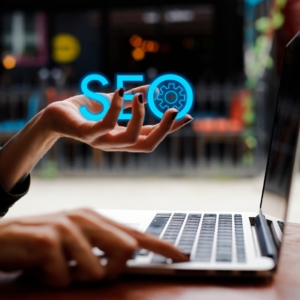Understanding the Difference Between Traditional and Digital Marketing

So which is better? The answer isn’t so simple. Each type of marketing has its own advantages and disadvantages. In some cases, a mix of both traditional and digital marketing may be the best approach. To help you make the most informed decision for your business, let’s take a closer look at the pros and cons of each option.
Traditional marketing refers to any type of marketing that is done offline, such as TV commercials, print ads, and billboards.
Traditional marketing has been an effective method of reaching potential customers over a wide audience in the past few decades. TV commercials, print ads, and billboards have all done their part in creating brand awareness and introducing new products to the public. However, with more people spending time on the internet, digital marketing has become increasingly important for businesses in order to reach their target audience. Compared with traditional methods, digital marketing offers more precise targeting options and allows marketers to track results in real time. Despite its advantages, traditional marketing still holds its value since it is difficult to measure the ROI accurately on many digital campaigns. Essential for any successful business strategy is a combination of old and new marketing techniques that can bring the best of both worlds.
Digital marketing, on the other hand, is any form of marketing that is done online, such as through social media, email campaigns, and search engine optimization.
Digital marketing is an incredibly powerful tool for businesses looking to increase their reach and find new customers. As opposed to traditional marketing, digital marketing involves utilizing online channels such as social media, email campaigns, and search engine optimization to generate new leads and build relationships with potential customers. Digital marketing provides great flexibility in design; content can be created to meet the needs of various target audiences, allowing for a more personalized approach. Businesses can also track results more easily than ever before, enabling them to make informed decisions about what works best and craft campaigns accordingly. All in all, digital marketing offers businesses the ability to cost-effectively tap into new markets while keeping their existing customer base engaged.
The main difference between traditional and digital marketing is that traditional marketing is more expensive and less effective than digital marketing.

Traditional marketing also reaches a narrower audience than digital marketing, since it can only reach people exposed to it in the physical world.
Traditional marketing appeals to people who are served physical ads such as posters, banners, and signs. Reaching out to those in the immediate area with these means of advertisement limits the scope of traditional marketing, which only touches the people within direct view of it. On the other hand, digital marketing has almost unlimited reach, bypassing geographical boundaries by bringing global exposure with clickable ads and emails shared through social media platforms. Digital marketing offers a massive potential audience while traditional channels limit businesses to attracting an audience within a local vicinity.
Digital marketing is more effective because it allows you to target a specific audience with your message and track how many people see it and respond to it.
Digital marketing offers unparalleled advantages over traditional marketing mediums, such as print, radio, and television. For example, digital marketing allows you to easily target a specific audience with your message, so you can be sure it’s being seen by people who are most likely to appreciate and purchase your product or service. Additionally, you can easily track how many people see the ad and how many actually respond to it – which can give you invaluable information about what kinds of campaigns work best for your audience. While traditional methods of advertising have their own merits, digital marketing offers far more accuracy and control over who sees your message and the results it generates.
Digital marketing is also more cost effective than traditional marketing because you can reach a larger number of people for less money.

Traditional marketing is more expensive and less effective than digital marketing. Digital marketing is more effective because it allows you to target a specific audience with your message and track how many people see it and respond to it. Digital marketing is also more cost effective than traditional marketing because you can reach a larger number of people for less money. If you want to increase your product sales, invest in digital marketing instead of traditional marketing.




